


The Confrerie Pictura was a more or less academic club of artists founded in 1656 in The Hague (the Netherlands) by local art painters, who were unsatisfied by the Guild of Saint Luke there.



The Confrerie Pictura was a more or less academic club of artists founded in 1656 in The Hague (the Netherlands) by local art painters, who were unsatisfied by the Guild of Saint Luke there.
The guild of St. Luke in the Hague existed already in the 15th century and like most large Dutch cities, it catered not just to painters, but were united also with glaziers, engravers, sculptors, goldsmiths, printers and book sellers. In those days guilds were represented in churches with their own altars, and in the case of the painters' guild, they were sponsored by the church, and sometimes even ensured an income for church fathers through donations to the St. Luke's altar. After the Protestant Reformation, this all changed, and the churches were no longer a part of guild life. With the altarpieces gone that had traditionally been the public signboard for the artists, a new venue was necessary for sales. In addition, with the influx of talented painters from the Southern Netherlands cities such as Antwerp, the guild fathers felt that more protective measures were necessary. When securing a new protective charter for the St. Luke's guild failed to have the desired effect, the Confrerie Pictura was set up by 48 dissatisfied painters. [1] They were led by the first deacon and popular Hague portrait painter Adriaen Hanneman. [2]
Among the founders were Willem Doudijns (1630–1697), Jacob van der Does (1623–1673), Jan de Bisschop (1628–1671), Theodor van der Schuer, Dirck van der Lisse, Daniel Mijtens the Younger, Johannes Mytens, Willem van Diest, Adriaen van de Venne, Robbert Duval, Joris van der Haagen and Augustinus Terwesten.
The goal of the Confrerie Pictura was to protect the Hague painters and to reinforce ties between its members. Everyone working as a painter in The Hague was obliged to be a member of the Confrerie. Guilds installed strict rules to restrict what was seen as unfair trading, but also obliged its members to attend the funerals of its members for instance. The Confrerie had a set of 28 rules. One important rule was that its members were obliged to exhibit their works permanently at their meeting room. As soon as a work had been sold it had to be replaced by a new one. The Confrerie started meeting upstairs at the Boterwaag building, where butter was traded at the Prinsegracht. They paid rent by donating a painting to the city council. The Confrerie was governed by a deacon (deken), three governors (hoofdmannen) and a secretary, who were chosen every two years by the Magistrate of The Hague.

Later, in the 1680s the Confrerie received a somewhat better place at the Koorenhuis, the building where wheat was traded, also on the Prinsegracht. They had four separate rooms at the upper floor of this building.
In 1682, several members of Confrerie Pictura: Willem Doudijns, Daniel Mijtens the Younger, Augustinus Terwesten, Theodor van der Schuer and Robbert Duval, founded a proper art school called The Hague Drawing Academy. (Dutch: Haagsche Teekenacademie) It would occupy one of the rooms in the Koorenhuis building. [3] [4] The academy proved to be a success, and later on it would transform into the Royal Academy of Art, The Hague , which still exists today. [5] The original building is undergoing a restoration and expansion, but still exists (though damaged in the second world war) on the Prinsessegracht 4 in the Hague. Many original works of the founders and early members can be seen in the building's decorations.
Paying dues to a second guild in addition to Confrerie Pictura proved too expensive for most painters, however protective it was, and the St. Luke's guild was soon to be dissolved. Confrerie Pictura existed until 1849, when the newly founded art society Pulchri Studio (founded 1847) proved to be a more modern alternative.

The Royal Academy of Art is an art and design academy in The Hague. Succeeding the Haagsche Teeken-Academie, the academy was founded on 29 September 1682, making it the oldest in the Netherlands and one of the oldest in the world. The academy has been the training ground for a number of significant artists of the Hague School. It was part of the art movement of Dutch Impressionism and in the immediate vicinity of the II. Golden Age of Dutch painting. In the 19th century, however, training was still strongly oriented towards the classic curriculum. At the end of the 19th century, the academy had opened to Modernism, too.

Abraham Begeyn, was a Dutch Golden Age painter.

Pieter Florentius Nicolaas Jacobus Arntzenius was a Dutch painter, water-colourist, illustrator and printmaker. He is considered a representative of the younger generation of the Hague School.
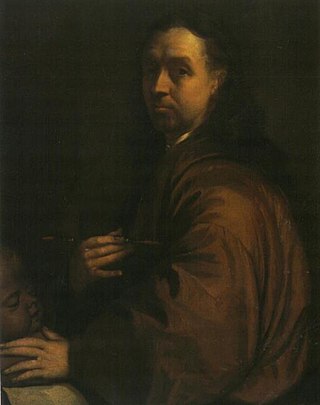
Augustinus Terwesten or Augustinus Terwesten the Elder was a Dutch painter, draughtsman, printmaker and art educator. He specialized in portraits, architectural and historical themes. He was known in his time for his decorative paintings in luxurious residences many of which have since disappeared. He left a great many preparatory drawings. He was a co-founder of The Hague Drawing Academy. He worked for a long time in Berlin where he was court painter to Frederick William I of Prussia and one of the co-founders of the Prussian Academy of Arts.

Johannes Mytens or Jan Mijtens, or "Mytens" to the English was a Dutch Golden Age painter, almost entirely as a portraitist.
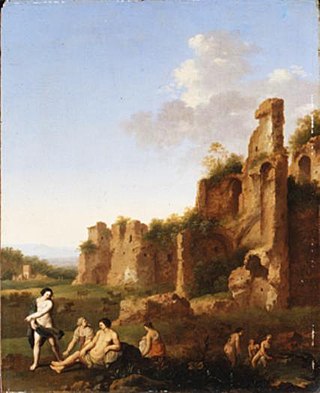
Johannes (Jan) van Haensbergen (1642–1705) was a Dutch Golden Age painter.
Jacobus Bisschop was an 18th-century painter from the Northern Netherlands.

Willem Doudijns (1630–1697), was a Dutch Golden Age painter and engraver.

Mattheus Terwesten or Matthäus Terwesten was a Dutch painter and art educator. He is known for his portraits as well as of mythological and allegorical subjects. He was a decorative painter he painted chimney pieces, overdoors, wall hangings and ceilings for the luxurious buildings of his time. He was director of The Hague Drawing Academy. He became court painter to Frederick William I of Prussia and professor at the Prussian Academy of Arts.

Robbert Duval, was a Dutch Golden Age painter who lived well into the 18th century.
Pieter Jansz van Ruyven, was a Dutch Golden Age painter.
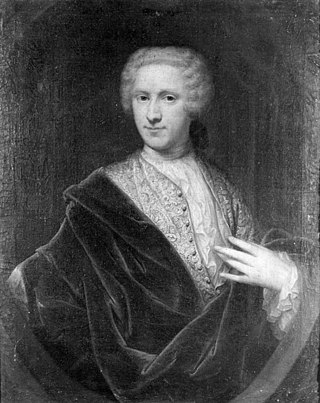
Johannes Vollevens II, was an 18th-century portrait painter from the Northern Netherlands.
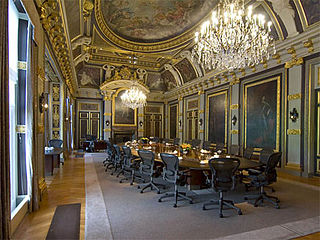
Theodor van der Schuer (1634–1707) was a Dutch Golden Age painter.

Daniël Mijtens the Younger, was a Dutch Golden Age painter and the son of Daniel Mytens the Elder, although some early sources indicate that his father was Jan Mijtens. His year of birth is sometimes given as 1636 or 1647.
Francois, or Frans Beeldemaker, was a Dutch Golden Age painter.
Nicolaes Willingh, was a Dutch Golden Age painter.

The Lives of Dutch painters and paintresses, or De levens-beschryvingen der Nederlandsche konst-schilders en konst-schilderessen, as it was originally known in Dutch, is a series of artist biographies with engraved portraits written by the 18th-century painter Jacob Campo Weyerman. It was published in four volumes as a sequel to Arnold Houbraken's own list of biographies known as the Schouburgh. The first volume appeared in 1729, and the last volume was published in 1769. This work is considered to be a very important source of information on 17th-century artists of the Netherlands, specifically those artists who worked in The Hague and in London.

Jacob Jan van der Maaten was a Dutch painter and etcher. Van der Maaten was a pupil of Hendrikus van de Sande Bakhuyzen and studied at the Royal Academy of Art, The Hague. In 1852 he became a member of the Royal Academy of Fine Arts in Amsterdam. Later, Van der Maaten became teacher at the so-called King's School in Apeldoorn (1866–1879).
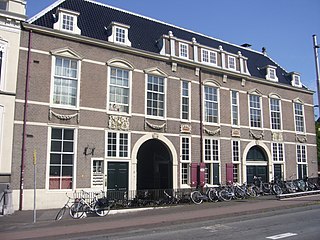
The Boterwaag is a former weigh house for butter in The Hague, Netherlands. The right half is a café.

Pieter Hardimé was a Flemish painter known for his paintings of flowers. He trained in Antwerp and later moved to the Dutch Republic where he worked in The Hague. He was active as a decorative painter of flowers for wall and ceiling decorations, often in collaboration with Mattheus Terwesten.